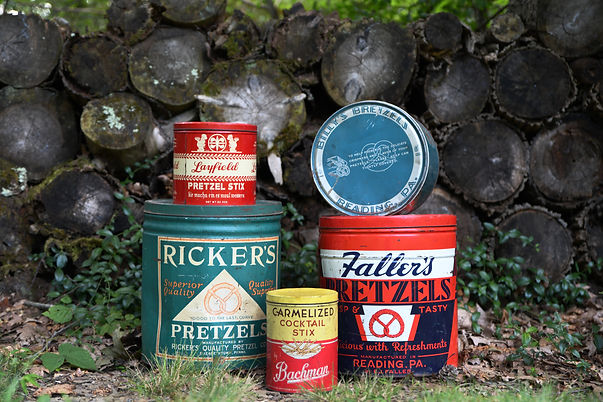What do pretzels have to do with books? Well, a lot! Just ask our principal operator and publisher, Marian Wolbers, and she will tell you. Marian is not a native to the area, but it didn’t take her long to figure out that people in Berks County are obsessed with pretzels (and for good reason, too). Nearly 21 years later, she completely understands why!
Pretzels bring people together, much like books. Marian has even determined that "pretzels and books definitely belong together forever.
Why Preztels
When I first moved to Berks County around 2000, it didn’t take much time at all for me to figure out that the people here are obsessed with pretzels. GOOD pretzels. A party or gathering is never without them, and conversations launch easily when the subject of local pretzel bakers comes up. People read newspapers and books with a bowl or canister of fresh pretzels at their elbow. Everyone’s got their favorites—or, if they’re like me, they have many favorite pretzels and each type has its place and purpose and special merits.
Since I’ve been writing literally my whole life, and since I was soon writing articles for the premiere regional magazine — Berks County Living — when I became Vice President and Director of Communications at the Reading Chamber of Commerce, I knew I’d be covering the pretzel circuit eventually. The big, hot pretzels that one could buy literally right out of the oven at Bell Alley became a topic in this story I wrote about all the things that make Berks County a quirky place. Read it here!
Soon I learned about all the other pretzels in this city and surrounding environs. When teaching ESL to international students at Albright College, I found myself scheduling field trips to introduce them to the region. Naturally, we ended up in Lititz, touring the Julius Sturgis Pretzel Bakery which has been in operation since 1861. In Reading (Shillington actually), there is a large Tom Sturgis Pretzels bakery in business since 1970, with its famous grinning boy on the outside of the building on Lancaster Avenue.
I learned about Unique Splits. Unique and Sturgis were often my “go to” whenever I needed to mail indigenous-treat Christmas gifts around the country to family and friends. (They make chocolate-covered pretzels, too… Yummmm.) Unique proved to be especially generous, donating large, gorgeous baskets for silent auctions when my youngest daughter competed in the Miss Pennsylvania program, which supported scholarships for smart, talented women.
Faller’s Pretzel Sticks came into my view when I married a Berks County boy, who loves dipping them into peanut butter as a snack. We often go directly to their bakery in inner-city Reading, where you can trade jokes and book-talk (Mike loves reading) with the owners and buy bags of crunchy goodies made that same day.
It goes without saying that all these pretzels are good partners with beer. Or any drink, really. Once upon a time, Reading was replete with beer makers. Though many of the large old beer companies closed, the recent trend of craft beer-making has completely changed the landscape here, and we now boast some fantastic breweries. Full circle.
But along the way, something happened. Bell Alley closed.
Then somebody tried to buy it to carry on the tradition! So we all got happy!
But the deal fell through. It was sad.
So—when I started Pretzel City Press, I remembered Bell Alley. I determined that pretzels and books definitely belonged together forever, and that if our readers wanted to buy signed copies of our books, we’d reward them with pretzels made right here, and even offer information about some of the other traditional pretzels enhancing this part of the Commonwealth of Pennsylvania.
Common wealth. That’s the whole idea behind “Why Pretzels.”
History of Pretzels
So… It turns out we humans don’t know as much as we think we know about the history of pretzels. Try researching the history of pretzels and you’ll see why this is not an open-and-shut case of historical fact. Some folks say, “Oh, that’s easy—an Italian monk made them in the year 610.” And they say the pretzel shape is related to arms crossed, with hands on opposite shoulders—the way children stand when they’re blessed by the priest before they can take Eucharist (Holy Communion). But there are other history-of-food scholars who say the baked pretzel with its classic shape started centuries before Christ was born.
So—let’s just go with what we’re sure of! We’re pretty sure the pretzels we’re most familiar with today came from the word “Bretzel” in German, and that Germans were deeply involved in bringing them to America. The Pennsylvania Dutch (a misnomer—“Dutch” is actually from “Deutsch” or German, in this case!) clearly started making them in parts of the USA when they emigrated here.
These two stories on History.com and The Spruce Eats have some credible info about the more recent evolution of pretzels, as we know them. You'll also enjoy this article from Berks History Center about how Reading, Pennsylvania became the pretzel capital of the world.
…Actually, if you come across any great research or pretzel stories, please send them to pretzelcitypress@gmail.com!



